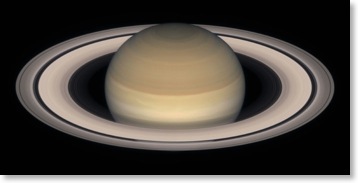Saturn’s Rings (and all Planetary Rings)
(This article has been reproduced from the Center for Scientific Creation. The original article can be found here.)Planetary rings have long been associated with claims that planets evolved. Supposedly, after planets formed from a swirling dust cloud, rings remained, as seen around the giant planets: Saturn, Uranus, Jupiter, and Neptune. Therefore, some believe that because we see rings, planets must have evolved.
Actually, rings have nothing to do with a planet’s origin. Rings form when material is expelled from a moon by a volcano, a geyser, or the impact of a comet or meteorite. Debris that escapes a moon because of its weak gravity and a giant planet’s gigantic gravity then orbits that planet as a ring. If these rings were not periodically replenished, they would be dispersed in less than 10,000 years. [Consider these quotes:]
“Yet nonstop erosion poses a difficult problem for the very existence of Saturn’s opaque rings—the expected bombardment rate would pulverize the entire system in only 10,000 years! Most of this material is merely redeposited elsewhere in the rings, but even if only a tiny fraction is truly lost (as ionized vapor, for example), it becomes a real trick to maintain the rings since the formation of the solar system [as imagined by evolutionists].” Jeffrey N. Cuzzi, “Ringed Planets: Still Mysterious—II,” Sky & Telescope, Vol. 69, January 1985, p. 22.
“Saturn’s rings (as well as the recently discovered ring system around Uranus) are unstable, therefore recent formations.” S. K. Vsekhsvyatsky, “Comets and the Cosmogony of the Solar System,” Comets, Asteroids, Meteorites, editor A. H. Delsemme (Toledo, Ohio: The University of Toledo, 1977), p. 473.
Also, water in Saturn’s rings is rapidly ionized and transported along magnetic lines to certain latitudes on Saturn. The Hubble Space Telescope has detected this water concentration in Saturn’s atmosphere. [See Richard A. Kerr, “Slow Leak Seen in Saturn’s Rings,” Science, Vol. 274, 29 November 1996, p. 1468.]
[Also,] because a planet’s gravity pulls escaped particles away from its moons, particles orbiting a planet could never form moons—as evolutionists assert.
----------
(This article was taken from the book, In the Beginning by Dr. Walt Brown. The book can be purchased from the Center for Scientific Creation. The original article can be found online here. For more information about Dr. Walt Brown, click here).
